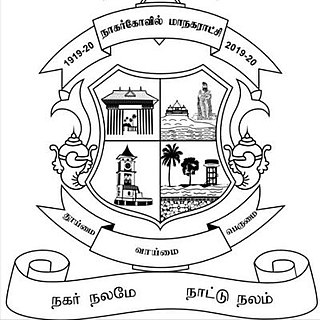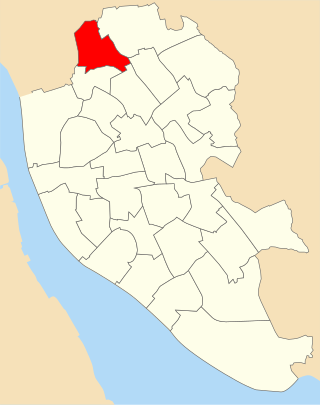
Aberdeen City Council is the local government authority for the city of Aberdeen, Scotland. It was created in 1996, under the Local Government etc. (Scotland) Act 1994, though a sense of Aberdeen as a city, with its own city council, can be traced back to 1900, when the county of the city of Aberdeen was created.

Toronto City Council is the governing body of the municipal government of Toronto, Ontario. Meeting at Toronto City Hall, it comprises 25 city councillors and the mayor of Toronto. The current term began on November 15, 2022.

An election to the County Council of London took place on 5 March 1913. It was the ninth triennial election of the whole Council. The size of the council was 118 councillors and 19 aldermen. The councillors were elected for electoral divisions corresponding to the parliamentary constituencies that had been created by the Representation of the People Act 1884. There were 57 dual member constituencies and one four member constituency. The council was elected by First Past the Post with each elector having two votes in the dual member seats. Unlike for parliamentary elections, women qualified as electors for these elections on exactly the same basis as men. Women were also permitted to stand as candidates for election.
An election to the County Council of London took place on 6 March 1919. It was the tenth triennial election of the whole Council. The size of the council was increased to 124 councillors and 20 aldermen. The councillors were elected for electoral divisions corresponding to the new parliamentary constituencies that had been created by the Representation of the People Act 1918. There were 60 dual-member constituencies and one four-member constituency. The council was elected by First Past the Post, with each elector having two votes in the dual-member seats.

An election to the County Council of London took place on 2 March 1922. It was the eleventh triennial election of the whole council. There were sixty dual member constituencies and one four member constituency, making a total of 124 seats. The council was elected by First Past the Post with each elector having two votes in the dual member seats.
Thanet District Council elections are held every four years to elect Thanet District Council in Kent, England. Since the last boundary changes in 2003 the council has comprised 56 councillors representing 23 wards.
Elections in the Regional Municipality of York of Ontario, Canada were held on 25 October 2010 in conjunction with municipal elections across the province. The results below are unofficial, pending review from the respective clerk's office for each municipality. Each elected representative becomes a member of York Regional Council.
Boston City Council elections were held on November 8, 2011. Eight seats were contested in the general election, as the incumbents in districts 1, 5, 6, 8, and 9 were unopposed. Three seats had also been contested in the preliminary election held on September 27, 2011.

Grangetown is an electoral ward in the city of Cardiff, Wales. It covers its namesake community of Grangetown. The ward was originally created in 1890 as a ward to Cardiff County Borough Council.

Cardiff County Borough Council, known as Cardiff City Council after Cardiff achieved city status in 1905, was the elected local authority that administered the town and county borough of Cardiff, Glamorgan, Wales between 1889 and 1974. The county borough council was replaced in 1974 by a district council, covering part of South Glamorgan and also known as Cardiff City Council.
The 1890 Cardiff County Borough Council election was held on Saturday 1 November 1890 to elect councillors to Cardiff County Borough Council in Cardiff, Wales. These were the second all-Cardiff elections since the creation of the county borough. They were first to take place since the increase in number of electoral wards from four to ten.
The 1919 Cardiff City Council election was held on Saturday 1 November 1919 to elect councillors to Cardiff City Council in Cardiff, Glamorgan, Wales.
The 1892 Cardiff County Borough Council election was held on Tuesday 2 November 1892 to elect councillors to Cardiff County Borough Council in Cardiff, Wales. These were the fourth all-Cardiff elections since the creation of the county borough. The previous elections were in November 1891 and the next elections were in November 1893.

The Mayor of Lyttelton was the head of the municipal government of Lyttelton, New Zealand. The position existed from 1868, when the Borough of Lyttelton was formed.

The 1884 Calgary municipal election was held on December 3, 1884 to elect a Mayor and four Councillors to sit on the first Calgary Town Council from December 4, 1884 to January 18, 1886.

Nagercoil Corporation is located in Kanyakumari district. Nagercoil is the administrative headquarters of Kanyakumari district and it is located in southern Tamil Nadu. The corporation is located 18 km north of Kanyakumari. Nagercoil Corporation is a forum with 52 members. At present Kottar, Vadasery and Vetturnimadam are the important places in Nagercoil Corporation. The annual tax revenue of this corporation is 81 crore rupees.

Elections to Aberdeen City Council took place on 5 May 2022 on the same day as the 31 other Scottish local government elections. As with other Scottish council elections, it was held using single transferable vote (STV) – a form of proportional representation – in which multiple candidates are elected in each ward and voters rank candidates in order of preference.

An election to the Aberdeen Corporation was held on 3 May 1949, alongside municipal elections across Scotland. 12 of the corporation's 37 seats were up for election.












